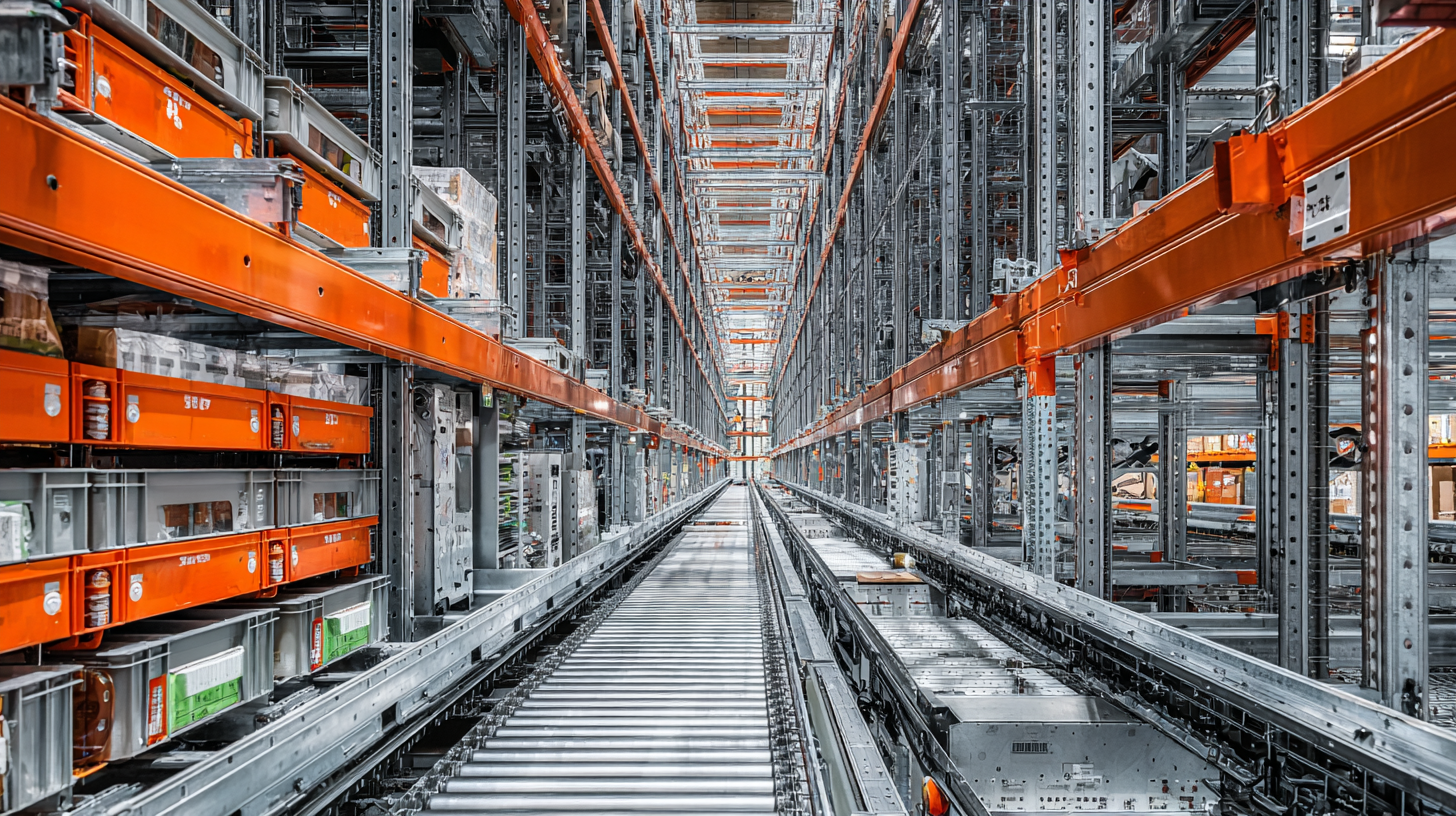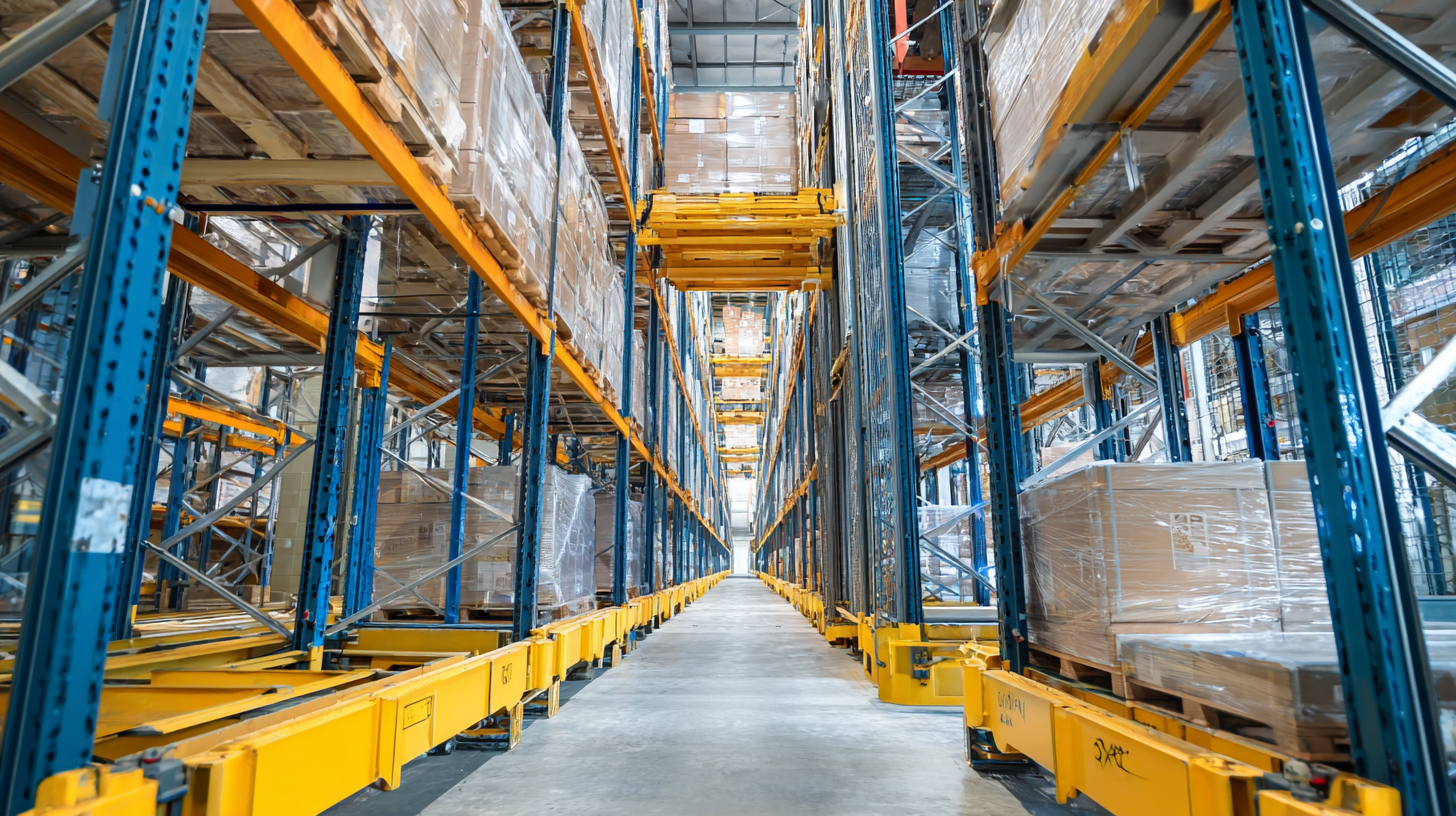Revolutionizing Efficiency: How Automated Storage Solutions Are Shaping the Future of Warehousing
In the rapidly evolving landscape of warehousing, the integration of automated storage solutions has emerged as a game-changer, transforming not only operational efficiency but also the overall approach to inventory management. As businesses strive to meet the demands of an ever-growing e-commerce sector, these innovative technologies offer a streamlined method for storing, retrieving, and managing goods. Automated storage solutions minimize human error, reduce labor costs, and maximize space utilization, facilitating faster processing times and improved accuracy. The rise of robotics and advanced software systems is empowering companies to optimize their supply chains, offering a glimpse into a future where productivity and efficiency are revolutionized. This transformation underscores the critical role that automation will play in reshaping warehousing practices, making it imperative for businesses to adopt these cutting-edge solutions to maintain competitiveness in an increasingly digital marketplace.

Understanding Automated Storage Solutions and Their Core Components
Automated storage solutions are fundamentally reshaping the landscape of warehousing by enhancing efficiency and optimizing space utilization. These systems, which include components such as robotic shelving units, conveyor belts, and automated retrieval systems, allow for faster inventory management and reduce human error. By integrating these technologies, warehouses can streamline their operations, leading to significant cost savings and improved accuracy in order fulfillment.
Tips for implementing automated storage solutions include conducting a thorough analysis of your current workflow to identify areas for improvement. It's crucial to select the right technology that aligns with your specific operational needs and to ensure seamless integration with existing systems. Additionally, training your workforce to effectively operate and manage these solutions is essential for maximizing their potential.
As the demand for rapid delivery and accuracy increases, the role of automated storage solutions will grow even more critical. Embracing these innovations not only enhances operational efficiency but also positions businesses to better meet customer expectations in a competitive market. By staying informed about the latest technologies and trends, companies can continuously adapt and thrive in the future of warehousing.
Evaluating the Benefits of Implementing Automation in Warehousing
The integration of automated storage solutions in warehousing is transforming operational efficiency across the industry. A recent study by the Warehousing Education and Research Council (WERC) highlights that organizations implementing automation can achieve a productivity increase of up to 30%. This surge in efficiency not only reduces labor costs but also enhances order accuracy, as automated systems minimize human error. With e-commerce demand skyrocketing—projected to account for 24% of global retail sales by 2026—warehouses are pressured to adapt quickly through automation to remain competitive.
**Tip:** Invest in an automation system that can seamlessly integrate with existing warehouse management software. This compatibility can significantly enhance the flow of operations and data sharing, making transitions smoother and more efficient.
Moreover, automated solutions also provide better inventory management, as advanced algorithms can predict stock levels and optimize storage space. According to a McKinsey report, companies utilizing robotics and AI in their supply chains experience a reduction in operational costs by about 20%. As these technologies become more affordable, adoption rates are expected to rise, complicating the competitive landscape but also unlocking new opportunities for efficiency and customer satisfaction.
**Tip:** Regularly conduct assessments to identify areas within your warehouse operations that could benefit from automation. By understanding specific pain points, you can tailor automation technologies to fit your unique needs and maximize ROI.
Revolutionizing Efficiency: How Automated Storage Solutions Are Shaping the Future of Warehousing
| Dimension | Description | Impact |
|---|---|---|
| Space Utilization | Maximizes use of available warehouse space through vertical storage. | Increases storage capacity by up to 50%. |
| Order Accuracy | Reduces human error in picking and sorting inventory. | Enhances order accuracy rates of 99% or higher. |
| Operational Speed | Automated systems accelerate the picking and packing process. | Improves throughput by 30% to 50%. |
| Labor Costs | Reduces dependency on manual labor through automation. | Decreases labor costs by approximately 20% to 40%. |
| Inventory Management | Enhanced tracking and management of inventory levels. | Reduces stockouts and overstock scenarios by 15%. |
Steps to Integrate Automated Storage Systems into Existing Operations
As the warehousing industry continues to evolve, integrating automated storage solutions has become essential for businesses aiming to enhance operational efficiency. According to a recent report by the Logistics Management Research Institute, companies implementing automated systems have reported a 30% increase in storage capacity and a reduction in order processing time by up to 50%. To successfully incorporate these automated storage systems into existing operations, businesses must first conduct a thorough analysis of their current workflows and identify areas where automation can bring the most benefit.

Once key areas have been identified, the next step involves selecting the right technology. For instance, automated guided vehicles (AGVs) and shelf robotics are gaining traction in warehouses, with the automated systems market projected to reach $30.73 billion by 2026, as highlighted in a study by Grand View Research. Companies should evaluate various options based on their specific operational needs, budget, and scalability. Additionally, involving staff in the transition process and providing adequate training will be crucial to ensure a smooth integration that maximizes the advantages of automated systems while minimizing disruptions.
Best Practices for Maintaining and Optimizing Automated Storage Solutions
As automated storage solutions continue to reshape the warehousing landscape, maintaining and optimizing these systems is crucial for maximizing operational efficiency. According to a report by the Warehousing Education and Research Council, organizations utilizing automated storage systems have seen a productivity increase of up to 30%, underscoring the importance of proper management practices.

One best practice for maintaining automated storage solutions is regular system audits. These audits help identify potential bottlenecks and allow for timely repairs, ensuring that systems operate at peak efficiency. A study from Logistics Management also notes that effective inventory management software integration can enhance visibility and reduce errors, making it easier to track inventory levels and streamline order fulfillment processes.
Tips: Implement a routine maintenance schedule that includes software updates and hardware checks. Additionally, invest in staff training to ensure employees are well-versed in the technology, as knowledgeable staff can significantly improve system performance and reduce downtime. Aiming for continuous improvement, such as analyzing performance metrics, can also play a pivotal role in optimizing your storage solutions.
Future Trends in Automated Storage Technologies and Their Impact on Warehousing
Automated storage technologies are poised to transform the warehousing industry significantly. According to a report by Mordor Intelligence, the automated storage and retrieval systems (AS/RS) market is expected to grow at a compound annual growth rate (CAGR) of 10.4% from 2021 to 2026. This growth is driven by the increasing demand for efficiency and accuracy in inventory management. With advancements in robotics, artificial intelligence, and machine learning, these systems are becoming more sophisticated, able to manage larger inventories with reduced human intervention.
One of the most notable trends is the integration of Internet of Things (IoT) technologies, allowing for real-time tracking and monitoring of goods within the warehouse. Research by Gartner indicates that by 2025, over 75% of warehouses will be equipped with IoT-enabled devices, enhancing operational visibility and supply chain responsiveness. Furthermore, as e-commerce continues to flourish, the shift towards automated solutions becomes crucial, as researchers estimate that automation can reduce order-processing times by up to 50%, fundamentally reshaping how goods are stored and retrieved in the future. Such innovations are not just improving efficiency; they are redefining the benchmarks for warehouse productivity.
Related Posts
-

Revolutionizing Manufacturing: How Pick and Place Robots Optimize Efficiency by 30% in Production Lines
-

Exploring the Future of Manufacturing Robots in Smart Factories
-

The Rapid Growth of Industrial Robotics Revolutionizing Manufacturing with 80 Percent Productivity Increase
-

Maximizing Efficiency with Modern Gantry Systems: Key Trends and Innovations Shaping the Industry Today
-

Revolutionizing Manufacturing: How Industrial Robotics Are Shaping the Future of Automation


